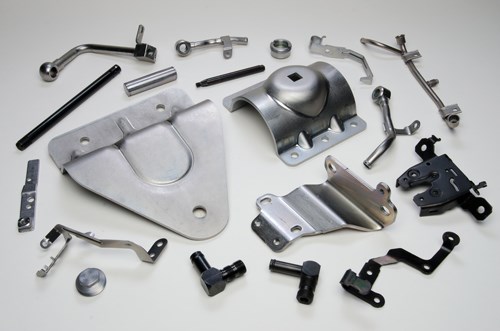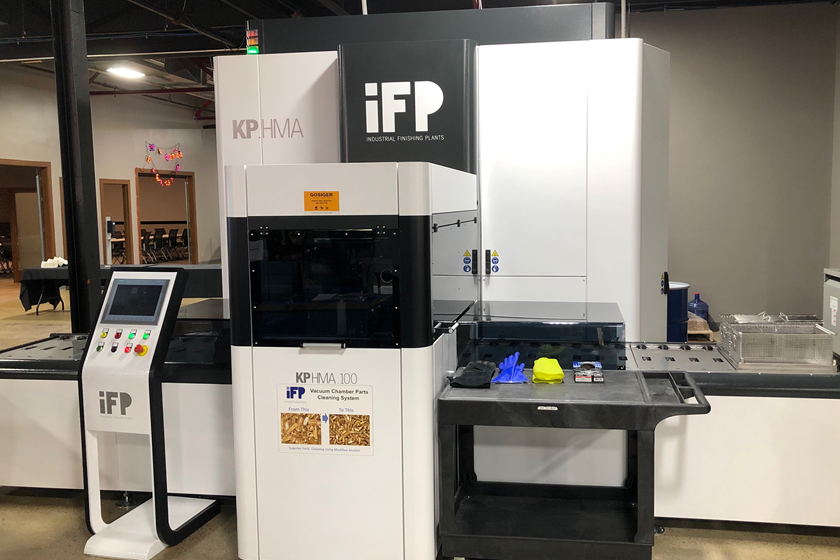EN-Boron Coatings Take Shine Off Hard Chrome
In the search for the “next best thing,” some platers are turning to an electroless nickel bath with boron, often with remarkable success and outstanding results. Thus, the reintroduction of NiB as a cost-effective Chrome replacement.
#pollutioncontrol #masking
Like gold-seekers in the California gold rush of the 1800s, platers searching for the often-elusive replacement to hard chrome protection have looked far and wide for a suitable stand-in for arguably the best corrosion-prevention coating known to man. In the search for the “next best thing,” some platers are turning to an electroless nickel bath with boron, often with remarkable success and outstanding results.
The chemists and researchers at KC Jones Plating in Hazel Park, Mich., discovered 12 years ago that adding boron to their electroless nickel bath yielded a new coating, nickel boron (NiB), with unique properties and surprising hardness to go along with very good wear, abrasion and corrosion resistance.
Featured Content
Brian Harrick, vice president of KC Jones, says its proprietary Miccrolloy electroless nickel boron plating system has benefits over chrome in its ability to accurately coat complex shapes (steel, stainless steel, Inconel and aluminum) with no post grinding.
Reduce Hard Chrome
Harrick says the nickel boron system delivers the highest hardness rating in the EN plating industry, exceeding Rockwell 70 C with post-treatment heating, and it offers great lubricity with a coefficient of friction at 0.044 near polytetrafluoroethylene (PTFE). Coating thickness ranges from 0.0003 to 0.004 inch, making it an excellent choice for new products, as well as to refurbish worn components. It can be chemically stripped and replated if required, and has no hydrogen embrittlement issues.
That’s especially great news to those who serve the military and defense industry and are looking to get out from under hard chrome coatings because of regulatory and environmental concerns.
“Electroless nickel boron is a harder coating and a more lubricious coating,” Harrick says. “But the customer also gets a more nodular coating, which sets it apart from anything else out there.”
Besides military and aerospace, the EN-boron combo is becoming popular with oil and gas, automotive and firearm coatings.
“It’s becoming much more utilized across many platforms,” Harrick says.
While several companies have proprietary EN-boron products, Harrick says it is a difficult bath to run, which means it might be out of the comfort zone of some platers.
“There are not a lot of people that run the product successfully,”
Harrick says. KC Jones has been using the bath since the early 1990s, he adds.
Getting the Right Mix
Mike Vetter, KC Jones’ business development director, said the company expanded its nickel-boron bath when it was working on a few aerospace applications, which ultimately drove the decision to become Nadcap certified.
“We took it over for high-volume production in automotive applications, but it has really done well in a number of other applications, too,” he says.
Vetter agrees that its widespread availability has been hampered because it is not an easy bath to control.
“It’s an extremely-high-pH bath, and a lot of substrates—aluminum, for example—are very susceptible to being destroyed with such a high pH level,” he says. “Sometimes, it’s hard to control the ratio between the boron and the stabilizer, which is either lead or thallium.”
Vetter says too much boron will cause the bath to plate very fast and produce rough and grainy results; too much lead or thallium will return a smooth, but slow, deposit.
“There are a number of NiB variations in the market, as well as electroless nickel boron nitride, that all perform differently,” he says. “But if it’s not the right control, you just won’t get the ‘optimum NiB’ with 4-6 percent boron and nodularity that you need.”
Boron Concentration
An SAE technical paper written several years ago says the rise in the use of the nickel-boron bath is due in part to the higher concentration of boron in the bath that can now be achieved, sometimes at 5-6 percent of the weight of the bath.
Nickel boron has a significantly lower coefficient of friction than chrome, HVOF or PVD, making it an excellent product because of its built-in lubricity. A part sliding across a boron surface rides on top of the nodules of the coating, and research has shown that the area of contact is often less than one half of that of a non-coated part, and often as much as a 70 percent reduction.
The SAE research says that the idea to use boron in plating baths to take advantage of the additional lubricity actually formed in the 1940s, but it wasn’t until the 1960s that it first took off and the idea gained steam.
Harrick says that KC Jones has used boron’s outstanding lubricity in several military assemblies the company is coating, including in parts for drones and military aircraft where constant lubricity is a value-added fact of the nickel-boron mix.
“When lubricated, overall wear properties are superior to hard chromium,” he says. “We process more than one million washers per month with Miccrolloy nickel boron, and it satisfies our customer needs for the hardest surfaces and wear characteristics available.”
“Now that chrome is being phased out, engineers are finding that, in most sliding wear applications, NiB is a superior product with a broader range of base materials,” Vetter says. “Everything we have learned in the past five years has allowed us to reintroduce a proven performance coating rather than release a new coating product.”
To learn more about KC Jones Plating, please call 248-399-8500 or visit kcjplating.com.
RELATED CONTENT
-
Sizing Heating and Cooling Coils
Why is it important for you to know this?
-
Blackening of Ferrous Metals
The reasons for installing an in-house cold blackening system are many and varied.
-
Smut and Desmutting
Question: I am new to this industry and have heard about smut and desmutting operations.






















